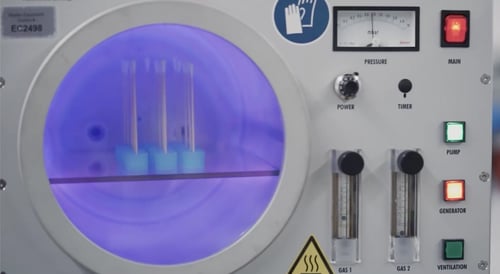Isotropic etching is one form of etching where it takes place in all directions. The sides of the etch balloon creates a concave shape under the photoresist etching mask rather than a straight
plasma etch that is achieved through
anisotropic etching. Since most applications such as the production of printed circuit boards require anisotropic etching,
isotropic etching does not have as many applications or advantages. However,
isotropic etching is often used to remove material from a large surface and to clean circuits prior to electroplating.
Wet Isotropic Etching vs. Dry Isotropic Etching
Isotropic etching used to be done primarily by using chemicals to etch out surfaces. This process is messy and hazardous, and is not able to etch with the same detail that can be accomplished with
dry isotropic etching. Dry
isotropic etching can be achieved through the use of Thierry’s low-pressure plasma systems. Unlike, using chemicals,
dry isotropic etching is an efficient and environmentally safe method.

